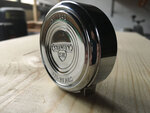We may receive a commission when you use our affiliate links. However, this does not impact our recommendations.

In my school’s woodshop we use planes quite often. Some of our 5th graders use them after they’ve finished their spoon and fork project and begin to make cutting boards, tool boxes or other projects that demand flattening a board’s face or edge. The 6th graders use shoulder planes to fine tune their frame saw’s tenons. Scrub planes, smoothers and jacks are used frequently in the 8th grade class to help flatten seats and legs, as well as chamfer facets. And during the 9th grade class we deploy all the planes in our arsenal to smooth out boards, make joinery and shape parts for the boxes that we build.
Learning how to make good use of the planes take some time. Some students seize command of the tool faster than others and even show a keen interest in understanding its mechanism and the way it can be adjusted. While others are happy to plane, they feel that adjusting the tool is somewhat too challenging for them, and so they ask me to help out.
I often find that almost all the young students that I teach will try once, twice or even more, to project the blade too much, hoping that this will help them shave the wood better and faster (planing against the grain worsens the situation even further), but then face reality when massive tear-out happens.
Increasing the blade protrusion beyond a reasonable amount often causes the plane choke up, as its throat gets filled with shavings. When this happens students try to solve the problem by attempting to clean the throat without removing the blade and chipbreaker assembly. I have seen students try to use steel rulers, paint brush bristles, even nails and screws – which of course makes me cringe. So I had to come up with a solution that will not be detrimental to the tool. Enter the Simplest of Tips, ever.
A toothpick is our remedy: So simple, so cheap, and so efficient, and it saves so much trouble. Using the toothpick is easy. Either poke the clogged shavings and push them in (I found that working from under the sole and driving the shaving in is easier) or just move the tip of the toothpick sideways to nudge the shaving away. If you think that this trick is only relevant to students, then I challenge you to try it yourself as clogged throats are an issue that can affect us all. So any efficient technique to clear the obstacles short of dismantling the lever cap, etc. is a godsend.
Here are some supplies and tools we find essential in our everyday work around the shop. We may receive a commission from sales referred by our links; however, we have carefully selected these products for their usefulness and quality.









